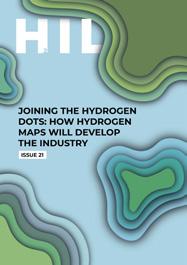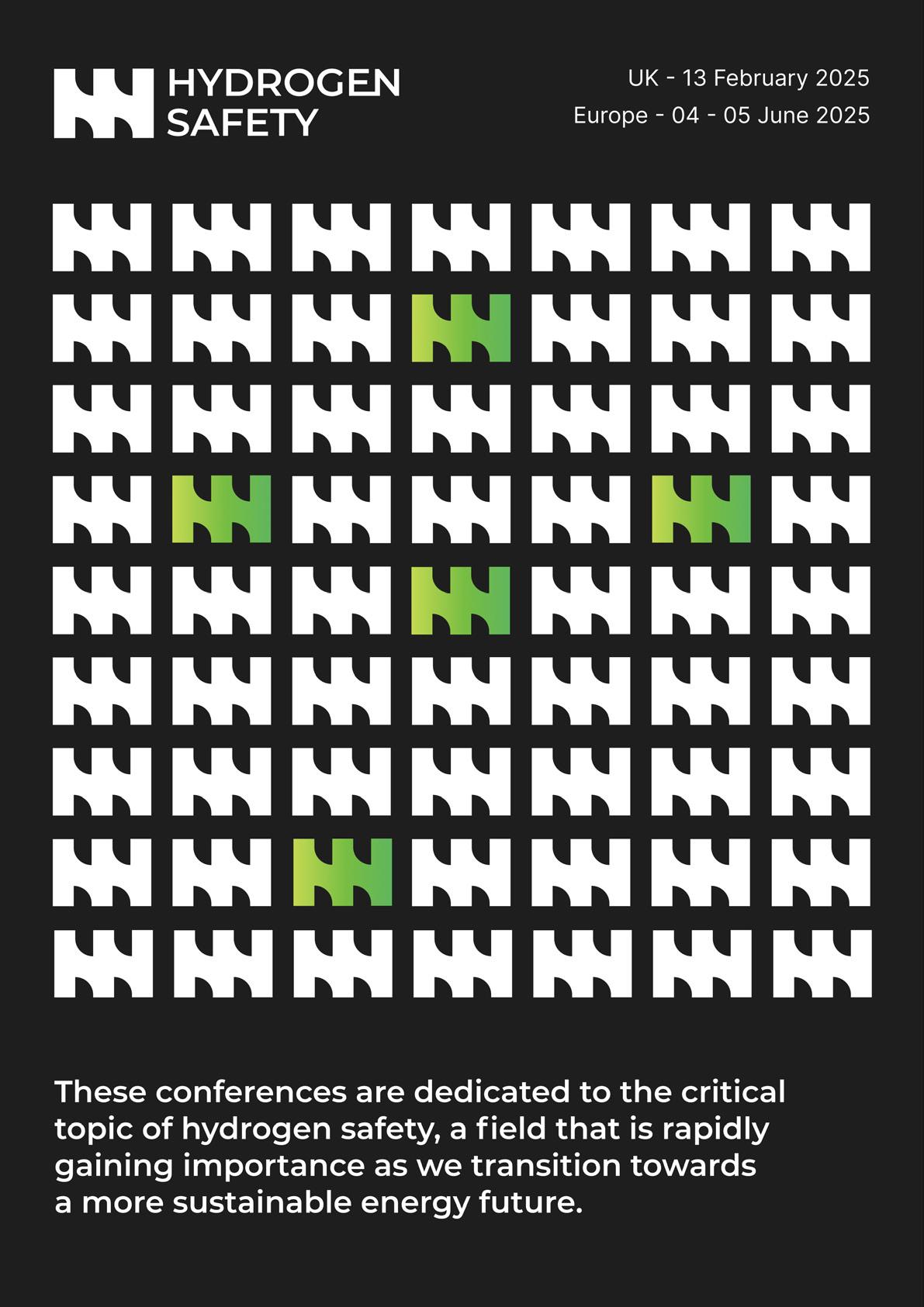

WHAT A SUPER MAJORITY MEANS FOR GREAT
COMING UP

From Glastonbury to Green Hydrogen: Decarbonising the World’s Most Famous Farm

Why the Sector Shouldn’t Discredit Afforestation, Carbon Capture, and Direct Ocean Capture

Hydrogen UK Manifesto: How to Help the New Labour Government Support a Hydrogen Economy
What a Super Majority Means for Great British Energy and Scotland

Updating the Guidance around Hydrogen Safety in the Maritime Sector

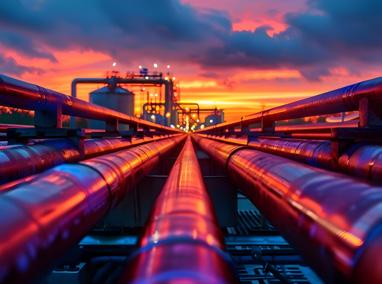
FOREWORD
“A
Super Majority Could Push Through Some Big Green Energy Policies”
Welcome to the latest edition of Hydrogen Industry Leaders, a magazine dedicated to the pioneers and visionaries shaping the future of the hydrogen economy. In this issue, we explore the innovations, challenges, and triumphs of an industry that stands at the forefront of the global energy transition.
In this edition, we delve into the latest technological advancements from hydrogen safety, to storage and distribution innovations. We also examine the policy frameworks and market dynamics driving investment and growth in hydrogen infrastructure worldwide.
Our featured articles highlight successful projects and collaborations that are setting benchmarks for the industry. We hear from leaders who are navigating the complexities of scaling up production and ensuring the sustainability of the hydrogen value chain. These stories of determination and ingenuity underscore the pivotal role of industry leaders in steering us toward a greener future.
Floyd March Editor f.march@peloton-events.co.uk
Hannah Wintle Multi Media Journalist
Paul Rose Graphic Designer

FROM GLASTONBURY TO GREEN HYDROGEN: DECARBONISING THE WORLD’S MOST FAMOUS FARM
When the Pyramid Stage has been unplugged and the sea of tents folded away, the home of the world-famous Glastonbury festival resumes business as usual: dairy farming. But Worthy Farm has secured its legacy in not only its musical exploits, but in its dedication towards sustainability and the mission to decarbonise agriculture.
Many festival-goers will be familiar with the site’s sustainability rules and practices, including its utilisation of renewable energy and requiring guests to ‘Love the Farm, Leave No Trace’ through recycling and generally respecting the land they camp on.
But notably, the farm is no stranger to large-scale renewable energy projects, having installed a biogas plant on site in 2019, turning cow manure into clean energy by converting the slurry into methane gas, which then drives a generator.
Today, this process is going a step further to facilitate the production of carbon negative green hydrogen from biomethane, thanks to a joint venture between British climate tech company Levidian, and Hexla, a company whose mission is to bring climate technology to market in order to drive the global energy transition to clean hydrogen.
Hydrogen Industry Leaders spoke to Hexla’s founder Andy Yeow, to understand how in delivering Levidian’s patented technology to one of the most famous farms in the world, the hydrogen industry is taking centre stage and demonstrating its viability within the future energy landscape of the UK and wider world.
DISCOVERING LEVIDIAN’S TECHNOLOGY
With ten years’ experience in the energy sector, Andy’s interest in green hydrogen and, specifically, how it can be produced using methane, led to his discovery of what is now the Levidian LOOP technology.
Beginning at Cambridge University, the technology was initially focussed on the production of graphene. Andy recalled his first conversation with inventor Krzysztof Koziol, during which he was shocked to learn that the hydrogen produced through the process was considered a waste product that was subsequently incinerated.
Having identified this untapped potential, Hexla was formed in 2021 and joined forces with Levidian to facilitate the technology’s scale up and deployment.
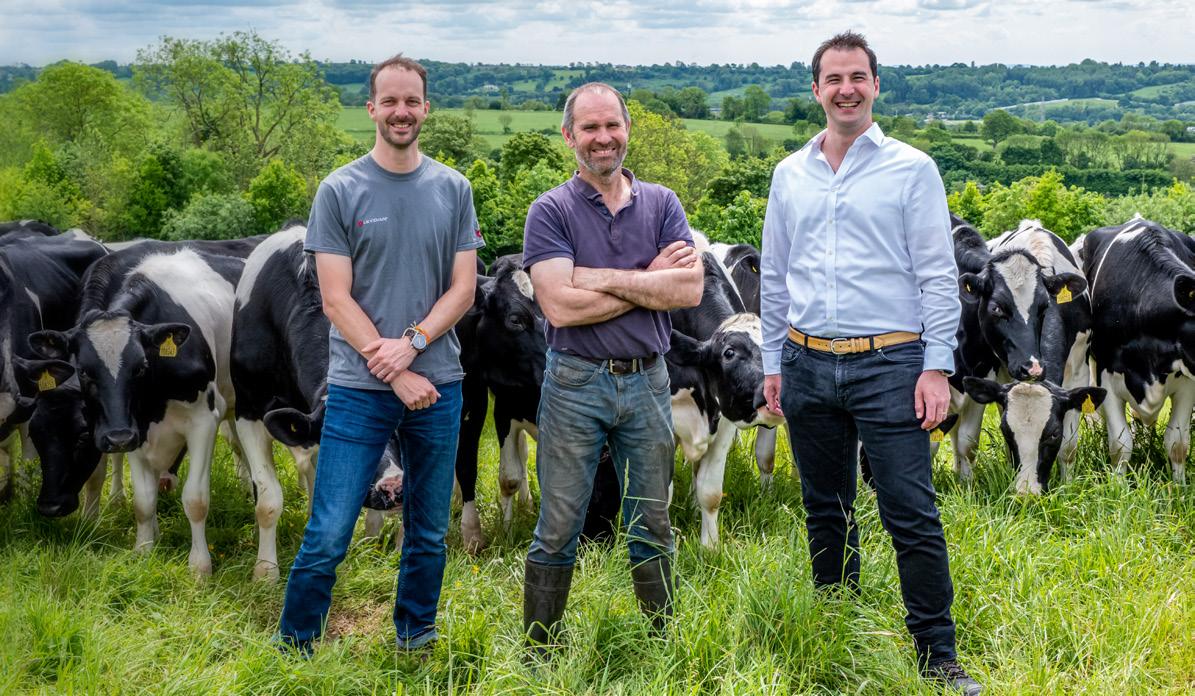
THE PATENTED TECHNOLOGY UTILISES A QUARTER OF THE FARM’S BIOGAS
The existing biogas plant on Worthy Farm will continue its usual function – running gas into an engine for heat for the farm and an electrical load for the farm and grid – though 25% of its gas output is now directed to the LOOP technology.
To enable this, Hexla first installed a biogas upgrader to the site to make the gas suitable for the Levidian unit, enabling it to do its job in capturing the carbon and produce high-value graphene and hydrogen in what Andy describes as ‘the world’s first example of carbon negative hydrogen from biomethane.’
While the exact processes behind the LOOP technology are known only to the experts themselves, broadly speaking, it utilises microwave frequencies to vibrate and crack the covalent bonds of the hydrogen and carbon within methane, allowing them to separate.
Andy noted that the process creates a cold plasma, which means that - thanks to lower temperaturesthe risk of excess heat running through the system and causing stress on components is mitigated.
Additionally, the process requires no catalyst, and therefore negates an extra ongoing cost.
The technology also allows the carbon to be captured in a solid state – graphene – which comes with its own set of applications and implications, including opening up a new revenue stream which could prove particularly valuable in the agriculture industry, where profit margins can be tight.
Each year, the Worthy Farm LOOP system will produce over 4 tonnes of hydrogen, enough to power 240,000 miles in a hydrogen vehicle
Each year, the Worthy Farm LOOP system will produce over 4 tonnes of hydrogen, enough to power 240,000 miles in a hydrogen vehicle, and Hexla is already looking to the future, with plans to develop an industrial-scale LOOP1000 that will be over 15 times bigger and will deliver the lowest cost clean hydrogen in the world as a result of the production of high-quality graphene.
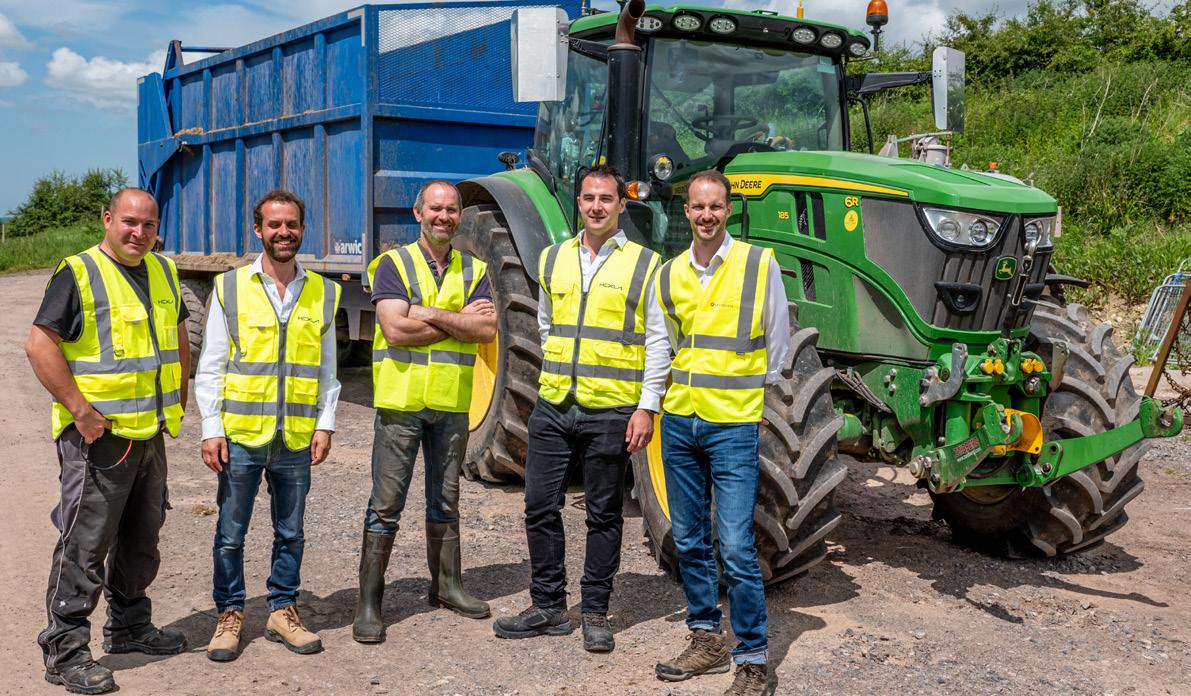
To be able to use that product that came from the cow, that came from the field, in a circular way is quite exciting.
HYDROGEN AND GRAPHENE BOTH CARRY COMMERCIAL AND SUSTAINABLE BENEFITS
Andy cited numerous use cases for graphene, including the prospect of graphene batteries, which are currently being explored for their potential to increase capacity and reduce charging time.
Furthermore, the concrete industry, which is known for being particularly carbon intensive, can introduce graphene into cement to reduce the amount needed, while also shortening drying times and reducing emissions.
Within farming itself, graphene is touted for its ability to regenerate soil, and thus facilitates a more circular approach to the decarbonisation of agriculture.
Where hydrogen is concerned, agricultural vehicles and heavy equipment, which currently largely run on diesel at present, could utilise the fuel, meaning farms could power their own equipment with hydrogen made on site.
Andy said: “What graphene can do to the world is going to be amazing from a decarbonisation point, so to be able to have a technology where both products that we produce are super useful for decarbonisation, I think the technology is in a very good place for helping with a with moving forward in a sustainable way.”
THE TECHNOLOGY DEMONSTRATES ACHIEVABLE RESULTS FOR THE WIDER SECTOR
More broadly, the hydrogen produced at Worthy Farm demonstrates the efficacy of a 20% hydrogen blend, something which has yet to be appropriately legislated despite the UK’s intentions.
“A lot of people talk about a 20% hydrogen blend. Well, we’re doing it, it is working. We’ve had no major issues so far with that. So, to be able to say to the world that it can be done is a privilege, and we’ve got the ability to showcase that globally, which is super exciting,” Andy said.
It is hoped that blending into the grid will further enable the uptake of technologies such as the LOOP system and subsequently accelerate decarbonisation initiatives, though the legislation to enable this has yet to be implemented.
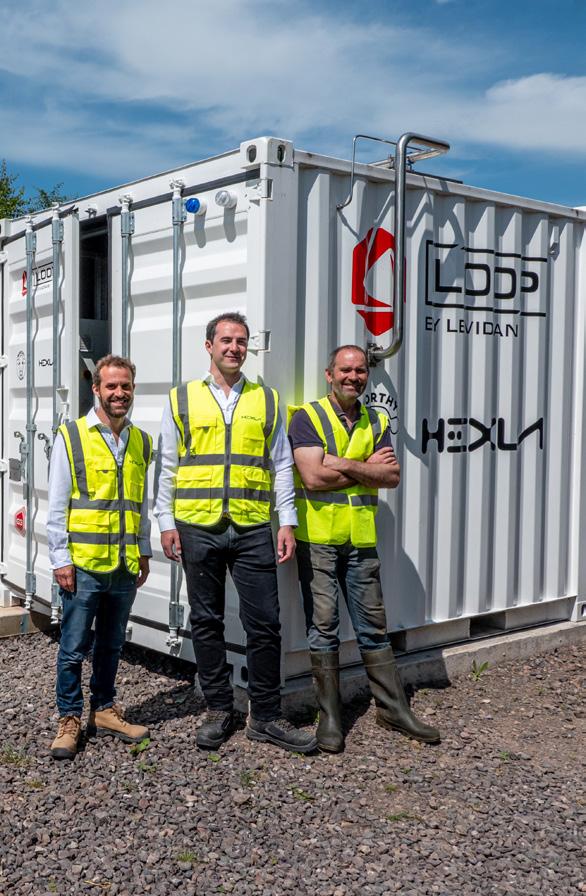
It just became an absolute no brainer to us to showcase to the world in a big way what this technology can do, and that is commercially viable to do it today.
Not only does the technology show that blending is viable, it also demonstrates that it is safe to do so. If hydrogen is to one day enter people’s homes or fuel their cars, the public must be certain of its safety.
Deploying the technology somewhere so well known to the general public – somewhere that 200,000 people visit every year, in fact – could help dispel myths around hydrogen safety and encourage confidence in its uptake.
WORTHY FARM IS SHINING THE SPOTLIGHT ON HYDROGEN PRODUCTION
While Worthy Farm’s existing biogas facility made it an ideal candidate for the deployment of the LOOP technology, its sustainable credentials and worldwide fame made it an attractive first venture for Hexla.
It’s that association that is going to help give accreditation to what the technology can do and hydrogen in general.
Now that Worthy Farm has officially joined in with the UK’s hydrogen efforts, Andy hopes that its high profile will encourage others to think more seriously about what hydrogen can do for them, and further propel hydrogen into the consciousness of the public and industry alike.
WHY THE SECTOR SHOULDN’T DISCREDIT AFFORESTATION , CARBON CAPTURE , AND DIRECT OCEAN CAPTURE

The recent IDTechEx webinar with technology analyst Eve Pope outlined various methods of carbon dioxide removal, from natural to more robust abiotic approaches.
The webinar addressed benchmarks, forecasts, and market outlooks included in IDTechEx’s report, “Carbon Dioxide Removal (CDR) 2024-2044: Technologies, Players, Carbon Credit Markets, and Forecasts”.
This article provides a deeper look at some of the other technologies covered in the report.
Carbon dioxide removal is required alongside reducing emissions to help reach net zero.
While hydrogen is expected to play an important role within this, it is important to note and dispel some myths around CCUS and carbon removal.
Once removed from the atmosphere, CO2 can be stored in numerous ways, such as trees and ecosystems, ocean reservoirs, and underground geological storage.
REFORESTATION AND MINERALISATION
Nature-based approaches are established ways to remove CO2 from the atmosphere, though they have recently seen increasing competition from engineered approaches.
While afforestation and reforestation effects could last up to 100 years, these are not long-lasting or durable enough and have the potential to be reversed.
Unlike engineered solutions however, there is no need for large capital investments - instead, startup companies can simply use drones to plant seeds over large areas.
Though planting trees can be done at large scales and may be cheaper than other methods, the carbon captured can be hard to measure, making it difficult to set and record targets.

A longer-lasting method of carbon removal is mineralisation. In this naturally occurring process, atmospheric carbon dioxide reacts with certain rocks to produce carbonate minerals, preventing excess CO2 from reaching the earth’s atmosphere.
However, it is clear that more engineered carbon dioxide removal approaches are needed to reach net zero targets.
BIOENERGY WITH CARBON CAPTURE AND STORAGE (BECCS)
BECCS (bioenergy with carbon capture and storage), also referred to as Bio-CCS, refers to any setting where biogenic gaseous CO2 emissions can be captured and permanently sequestered.
This includes generation of heat and power from biomass in various contexts, but also industrial facilities such as pulp and paper mills or ethanol plants.
As of 2023, 1.7Mtpa of biogenic CO2 was captured and stored, making it the largest scale engineered approach of carbon removal.
IDTechEx predicts that BECCS could help remove over 204 Mt CO2 per year by 2044.
The maturity of carbon capture technologies and existing biogenic CO2 industrial processes represent a clear pathway for scale-up. However, the 1 megatonne per annum scale is yet to be successfully operated for BECCS and the necessary CO2 transportation and storage infrastructure does not yet exist.
Above a certain scale, crops for BECCS will compete with agricultural land, potentially limiting further growth.
OCEAN-BASED CAPTURE
Ocean-based approaches have the potential to play a larger role in carbon dioxide removal.
Ocean alkalinity enhancement or direct ocean capture could enhance natural carbon sinks and have good potential to become a successful means of CO2 removal.
Though they are not yet mature methods, IDTechEx reports that it only took around 3 years to reach 1000 tonnes per annum, proving these methods have good prospects in the industry.
MORE HELP REQUIRED
Players using various CO2 storage methods such as mineralisation, geological storage, and enhanced oil recovery will need to come together to help make CO2 removal even more successful.
Reducing emissions will be the main approach going forward, but CO2 removal is needed to reach net zero.
IS CARBON DIOXIDE REMOVAL DEFERRING THE PROBLEM?
Carbon removal and CCUS can sometimes be described as ‘kicking the can down the road.’
There are growing concerns that valuable resources will be allocated to drawing down CO₂ from the air as opposed to preventing emissions from reaching the atmosphere in the first place.
Indeed, although most of the world’s mitigation efforts will need to be done by reducing emissions, there is evidence that deploying certain NETs may be more cost-effective and less disruptive than reducing some hard-to-abate emissions.
Incremental reductions in anthropogenic emissions will likely become more expensive once they reach very low levels, whilst the cost of effective NETs will likely reduce with deployment.
In such a scenario, methods for reduction and removal of emissions may become competitors for an extended period.
Nevertheless, a competitive scenario can be desirable as it can improve the world’s ability to manage unexpected risks inherent to mitigation actions.
The vast availability of low-cost mitigation solutions will only become a reality if both CDR and emission abatement solutions are developed in tandem and act as complementary components of a diverse mitigation portfolio.
For more information, please see IDTechEx’s report on the topic, “Carbon Dioxide Removal (CDR) 20242044: Technologies, Players, Carbon Credit Markets, and Forecasts”.
With all this in mind, a major obstacle for net zero technologies in combatting climate change is bridging the gap between fundamental research and its application in the real world.

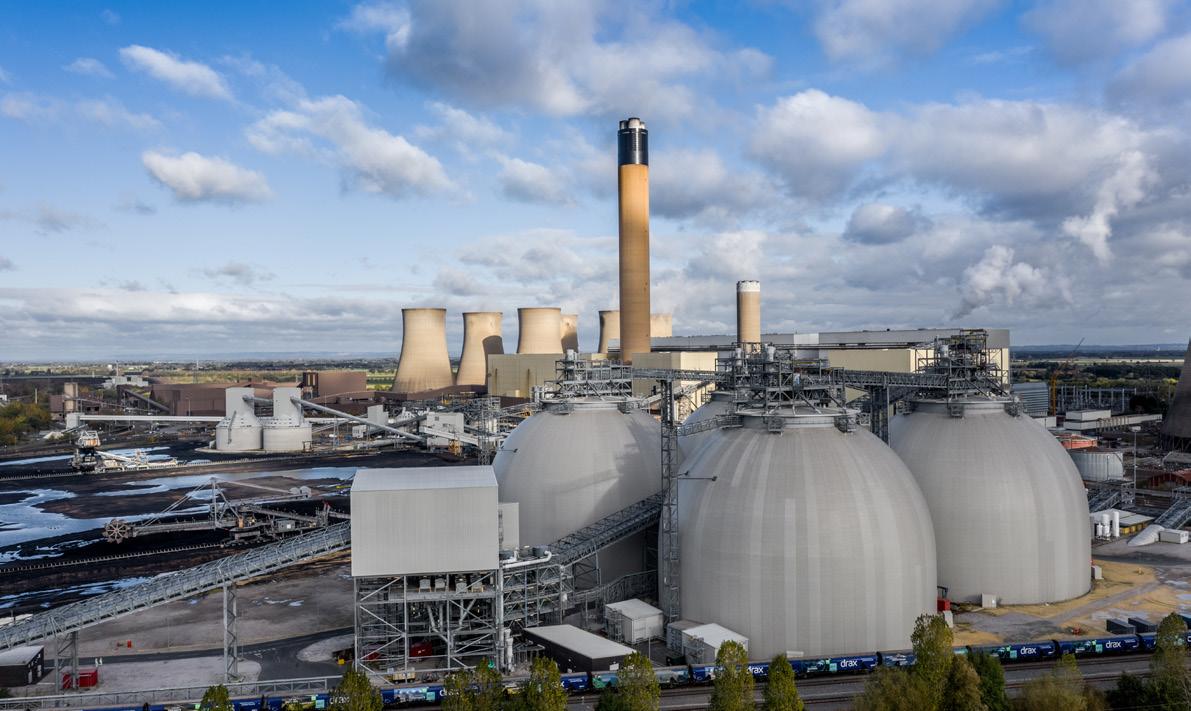
CAN WE CLOSE THE ‘VALLEY OF DEATH’ GAP?
This gap, sometimes referred to as ‘the valley of death’, is common in the field of carbon capture.
Now, a team of scientists from Heriot-Watt University is behind a pioneering platform named PrISMa (Process-Informed design of tailor-made Sorbent Materials) which uses advanced simulations and machine learning to find the most costeffective and sustainable material-capture process combinations prior to implementation.
The platform and its associated research have been published in the internationally renowned journal, Nature.
Professor Susana Garcia led the study and is the project coordinator for PrISMa. She is also the Associate Director of Carbon Capture, Utilisation and Storage (CCUS) at the Research Centre for Carbon Solutions (RCCS) at Heriot-Watt University in Edinburgh.
She explained: “Over the past decade, there has been a huge amount of effort devoted to identifying promising materials capable of capturing CO2.
“We cannot expect chemists to have all that knowledge. Here is where PrISMa can make a huge difference.
The platform uses quantum chemistry, molecular simulation, and Machine Learning to predict, for new materials, all the data that is needed to design a process.
“The PrISMa platform is a modelling tool that integrates different aspects of carbon capture, including materials, process design, economic analysis, and life cycle assessment.”
Alternatively, the sector can use the experimental data from materials synthesised in a lab. The platform then evaluated their performance in over 60 different case studies from around the world.

UPDATING THE GUIDANCE AROUND HYDROGEN SAFETY IN THE MARITIME SECTOR
As the global maritime sector looks to decarbonise its operations, hydrogen has emerged as a viable and attractive solution. In order to accelerate the fuel’s utilisation, safety concerns must be identified and rapidly addressed.
To do just this, the European Maraitime Safety Agency (EMSA) set out to investigate the current safety landscape and the resulting reportMapping Safety Risks for Hydrogen-Fuelled Ships - establishes the aim to create a Guidance to assist industry and regulators moving forwards.
This comes after the International Maritime Organisation (IMO) updated its greenhouse gas (GHG) strategy in 2023, outlining the target to achieve net zero by 2050, though the EMSA report states: “Energy efficiency measures can lower GHG emissions from ships, but they will not bring the industry to net-zero emissions by 2050 without a change to zero-GHG fuels and potentially other technologies.”
If hydrogen is to step into the role of a viable alternative maritime fuel, upcoming regulatory frameworks will need to adequately address the difference in safety procedures of both the fuel itself and the associated technologies necessary for its deployment.

C
It is of the utmost importance that storage and distribution systems for hydrogen fuel are sufficiently protected against external events that have the potential to damage them.
ESTABLISHING THE RISKS
There are multiple safety hazards associated with hydrogen’s use on ships. Primarily, hydrogen is highly flammable, more so than natural gas, and has a higher burning velocity compared to methane which could result in more severe explosions.
Where storage and distribution is concerned, the report highlights hydrogen’s low boiling point as a safety concern, stating: “This includes managing boil-off gas and preventing the condensation and solidification of gases with higher boiling points.
“Air contaminants in a liquefied hydrogen (LH2) system will solidify as nitrogen, oxygen, and frozen water. These contaminants can cause obstructions in piping or instruments, causing equipment malfunction, and presenting a possible explosion hazard when systems are heated up and the oxygen-enriched air evaporates.”
Any damage to containment or piping systems could also lead to the release of all the hydrogen on board, which the report described as a ‘catastrophic event’.
The compression of hydrogen to high storage pressures leads to the gas gaining significant potential energy, which if released too suddenly can cause strong pressure effects and even, in some instances, ignite spontaneously.
“Hydrogen releases in confined spaces are particularly dangerous because the explosion pressure builds up rapidly after ignition, leading to potential structural damage, an increased risk of further hydrogen leakage, and the destruction of safety barriers,” the report adds.
Hydrogen embrittlement is also acknowledged, and significant leakages can cause oxygen depletion and asphyxiation. Additional properties such as low surface temperatures and reduced flame visibility could lead to injuries including frostbite and burns.
NOT ALL LAND-BASED SAFETY SOLUTIONS ARE SUITABLE AT SEA
While the report acknowledges that the safety procedures established and developed in other industries are vital in the safe handling of hydrogen, it emphasises the difference in what is possible on land versus at sea.
Space constraints and environmental conditions, for example, mean that some established safety practices, such as separation distances and keeping all leakage sources in open air, aren’t possible aboard a ship.
That said, there are certain lessons to be learned from hydrogen-related accidents that highlight specific areas of focus for hydrogen safety in general going forward.
Following the analysis of nearly 600 accidents, the leading causes identified fall into two categories: system design error and failure, and human error. A combination of both of these factors was also identified as the cause of accidents with severe consequences. Therefore, adequate training and understanding, and improved safety management systems will prove crucial in mitigating the risk of accidents.
EXISTING SAFETY STANDARDS AND THE REPORT’S RECOMMENDATIONS
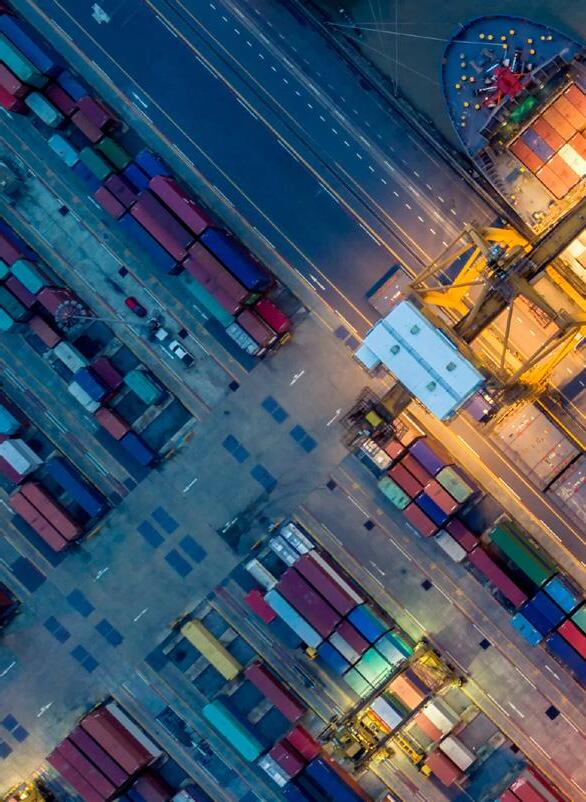
The report finds that the existing safety barriers in the IGF code for natural gas do not account for hydrogen’s extreme flammability and calls for further regulatory development.
As such, the IMOs draft Interim Guidelines for hydrogen-fuelled ships have been reviewed by EMSA, and specific mitigation actions related to hydrogen-specific hazards are identified for further consideration in the development of a Guidance document:
f Extensive guidance on risk assessment scope
f Accumulation of released hydrogen (confined areas, enclosed, semi-enclosed spaces)
f Formation of liquefied or solidified air and water
f Loss of vacuum insulation
f Vent mast arrangements
f Materials suitable for hydrogen service (hydrogen permeation and embrittlement)
f Definition of leakage sizes for various piping system components, including full bore rupture
f Location, design, and construction of hydrogen storage tanks.
f Arrangement of secondary enclosures for hydrogen piping (vacuum, helium, nitrogen)
f Arrangement of spaces containing hydrogen systems (vacuum, helium)
f Fire safety
f Hazardous area classification, including electrical equipment
f Personnel safety and PPE

In creating a hydrogen-specific Guidance, the report emphasises that establishing a safe foundation for operation can be embedded during the design phase so as to mitigate risk from the outset.
However, it is also essential to implement proper training and operating procedures to ensure the safe operation of a ship throughout its lifespan, and, the report adds: “The design intent needs to be maintained through the full life cycle: safety measures should not degrade.”
While the IGF Code provides a starting point for hydrogen ships, other bodies, including NASA in 1997, recommend the assumption that an ignition source is present, and so secondary barriers should be taken to mitigate this particular risk.
The report also draws upon the MarHySafe project, which recommends considering severe leak scenarios rather than focussing on small credible leak sizes in risk assessments. As such, the report states: “Establishing the size of hydrogen leakages that a hydrogen-fuelled ship is designed to withstand is essential to determining its overall safety level.”
Eliminating hazards is always the best option, but it may not always be possible. In such cases, it’s essential to implement a range of risk controls to reduce the risks to an acceptable level.
Ultimately, the report identifies that to achieve a safety level comparable to conventional oil-fuelled ships, functional requirements must ensure the following:
f A substantial leakage from fuel piping systems should be considered in the design of safety barriers for a hydrogen-fuelled ship
f The ship design should be based on the assumption that there is a probability of ignition even after measures like installing certified-safe electrical equipment have been taken
f Hydrogen leakages should be prevented from reaching areas where combustion could be supported
As EMSA strives to establish a Guidance on hydrogen safety in the maritime sector, it will continue to mature its approach through reliability analyses, formal hazard identification workshops of generic and specific ship designs, risk analyses, and industry-wide hearings.
WHAT A SUPER MAJORITY MEANS FOR GREAT BRITISH ENERGY & SCOTLAND


The polarisation of politics in the UK has undoubtedly grown since the decision to leave the European Union, but there seems to be some unity when it comes to net zero - despite differences on how to get there.
Labour fought parts of the election on this issue, and pitched the idea of Great British Energy, a publicly owned energy company focusing on the transition to net zero and boosting energy security.
If delivered there won’t just be huge implications for the UKs energy system, but Scotland might be at the heart of the programme and deliver true energy independence.
Untapped advantages in Scotland and the UK such as the long coast-line, high winds, shallow waters, universities, and skilled offshore workforce combined with extensive technological and engineering capabilities is undeniably an exciting prospect.
At the heart of this approach will be the ‘Green Prosperity Plan’ where, in partnership with business through a National Wealth Fund, which will invest in the industries of the future.
Perhaps taking note of the IRA in the United States, and the huge amount of private investment that followed Government commitments, Labour have announced their ambition to work with the private sector to double onshore wind, triple solar power, and quadruple offshore wind by 2030.


GREAT BRITISH ENERGY WILL FOCUS ON A SUITE OF TECHNOLOGIES
In a statement during the launch of Great British Energy, Labour explained: “We will invest in carbon capture and storage, hydrogen and marine energy, and ensure we have the long-term energy storage our country needs.
A new Energy Independence Act will establish the framework for Labour’s energy and climate policies.

While many across the commons understand the need to transition to clean low-carbon energy; there have often been debates around the pace of this transition and ensuring jobs are protected, especially in Scotland.
One of the debates is around issuing new licences to explore new fields in the North Sea; but with a super majority, Labour will hope they can extinguish this debate and push through their plans.
However, with the Greens gaining four seats, alongside the commitments made by the Lib Dems and some in the Conservative Party, there will still be rigorous accountability from different wings of the political spectrum.

SUPER MAJORITY DOESN’T MEAN AN EASY RIDE FOR STARMER AND GBE
Keir Starmer still has a huge challenge to get this flagship project over the line despite the majority, but if proposed correctly could see some level of cross-party support as each of the political parties (aside from Reform UK) understand the importance of net zero and energy security.
Scotland, under the SNP have undoubtedly set some strong foundations for hydrogen production across Scotland, and despite the demise in the GEdwindling down to just 9 seats - these efforts won’t be in vain according to the GBE plans.
Labour have another potential headache, with the Holyrood 2026 election. You could argue that despite the issues SNP faced in the election campaign, a lot of Labour votes are ‘on loan’ from the SNP and they’ll need to act fast to deliver on ambitious climate targets; amongst other key issues in Scotland
The majority comes into play here too; Starmer has a lot to achieve in Scotland and solidifying the political position here could be key to the longevity for the GBE plans in the country. His sizeable majority might help channel policies to Scotland and keep a grip on Scottish politics..
Whatever the view on this, all eyes will be on the 2026 Scottish elections; including those of Anas Sarwar and Keir Starmer.
On this, Hydrogen UK launched their own manifesto discussing what the new Government should focus on in the first 100 days of office.
The manifesto opens with recommendations for the immediate actions the government should take in order to set the stage for future hydrogen progress.

Whatever the view on this, all eyes will be on the 2026 Scottish elections; including those of Anas Sarwar and Keir Starmer
HYDROGEN UK HIGHLIGHT THE NEED FOR STRONG COMMITMENTS
Referencing the first recommendation in this list, Clare Jackson, Chief Executive at Hydrogen UK, said: “Seeing is believing with any innovative technology. To showcase hydrogen’s true value, we must ensure pioneering projects reach final investment decisions as soon as possible.
“The incoming government must prioritise this within its first 100 days, or risk jeopardising all progress made thus far.”
Aside from this urgent point regarding FID, the manifesto also recommends the following actions to be taken within the first 100 days:
f The immediate funding of projects within Track-1 of the Cluster Sequencing Process
f Expedite the first allocation rounds of the Hydrogen Storage Business Model and Hydrogen Transport Business Model
f Appoint a UK Hydrogen Minister, or an Office for Hydrogen within government, like has been done with the Office for Zero Emissions Vehicles
f Adopt a Low Carbon Hydrogen Standard to provide a single consistent definition of low carbon hydrogen
f Commit to future hydrogen allocation rounds and release the consultation on the design of the hydrogen funding mechanism.


HYDROGEN UK MANIFESTO:
HOW TO HELP THE NEW LABOUR GOVERNMENT SUPPORT A HYDROGEN ECONOMY

On the run up to last month’s general election, as the major political parties were publishing their manifestos and canvassing for votes, Hydrogen UK released their own in its attempt to make key policy recommendations for the next government.
Now that Labour have officially formed government and Keir Starmer has taken up residence in Number 10, Hydrogen Industry Leaders delves into the Hydrogen UK manifesto, and examines Labour’s pledges to support the UK hydrogen economy.
A new Government presents an opportunity for policymakers to solidify commitments and accelerate the deployment of hydrogen technology, ensuring the UK remains competitive in the global race.
Clare Jackson, Chief Executive, Hydrogen UK

FIRST 100 DAYS
The manifesto opens with recommendations for the immediate actions the government should take in order to set the stage for future hydrogen progress.
Referencing the first recommendation in this list, Clare Jackson, Chief Executive at Hydrogen UK, said: “Seeing is believing with any innovative technology. To showcase hydrogen’s true value, we must ensure pioneering projects reach final investment decisions as soon as possible.
The incoming government must prioritise this within its first 100 days, or risk jeopardising all progress made thus far.
Aside from this urgent point regarding FID, the manifesto also recommends the following actions to be taken within the first 100 days:
f The immediate funding of projects within Track-1 of the Cluster Sequencing Process
f Expedite the first allocation rounds of the Hydrogen Storage Business Model and Hydrogen Transport Business Model
f Appoint a UK Hydrogen Minister, or an Office for Hydrogen within government, like has been done with the Office for Zero Emissions Vehicles
f Adopt a Low Carbon Hydrogen Standard to provide a single consistent definition of low carbon hydrogen
f Commit to future hydrogen allocation rounds and release the consultation on the design of the hydrogen funding mechanism.
PRODUCTION, NETWORKS, AND STORAGE
Where production is concerned, Hydrogen UK also urged a technology agnostic approach when it comes to hydrogen production, so as to deliver the 2030 target of 10GW through the development of various production methods, enabling decarbonisation and economic prosperity by lowering the subsidy cost for future production projects.
The manifesto states: “By developing all production methods in tandem, the UK has an opportunity to deliver faster, deeper decarbonisation and capture the economic value associated with hydrogen.”
In addition, the manifesto addressed the issue of networks and storage, highlighting the need to unlock capital investment and create regulatory frameworks that facilitate the transportation and storage of hydrogen to balance energy supply and demand.

RECOMMENDATIONS AROUND DEMAND CALLS FOR A THREE-PRONGED APPROACH
Hydrogen UK also made comprehensive recommendations for supporting demand: “Supporting a high level of aggregate demand for hydrogen will enable the development of the full value chain.”
To do so, it highlighted that the rapid release of necessary policy frameworks would facilitate the “active deployment of hydrogen technology across various end uses by 2030.”
Delving deeper, the manifesto further divided this complex issue into three distinct sections, each with their own set of recommendations.
Regarding power, it called for a target for hydrogento-power deployment by 2035 to coincide with the decarbonisation of the electricity grid, and to prioritise the development of ‘first-of-a-kind’ hydrogen power stations which will inform future developments.
Recommendations around industry included introducing measures to facilitate offtake agreements including low-carbon hydrogen certification, unlocking capex funding to support industrial fuel switching to hydrogen, and ensuring that said fuel switching is done in collaboration with the development of transport and storage infrastructure.
Finally, the manifesto addresses transport, with recommendations including a heavy goods vehicle and bus infrastructure strategy with a target of 50 hydrogen refuelling stations by 2035, making hydrogen the centre of the update to the Jet Zero strategy, and integrating maritime into the UK Emissions Trading Scheme to accelerate the deployment of ships fuelled by hydrogen and hydrogen derivatives.
REACHING NET ZERO HAS BECOME A MAJOR POLITICAL TALKING POINT
In recent years, the effects and looming threat of climate change have pushed net zero conversations to the forefront, and it has become an issue that the public not only cares about, but will influence their vote.
As such, it was unsurprising to see net zero mentioned across the array of manifestos. Despite political polarisation, net zero has become a uniting factor, with most parties acknowledging that action must be taken. The only variable: the extent and approach.
Leading up to the election, the Labour Party manifesto stated that a Labour government would: “Invest in carbon capture and storage, hydrogen and marine energy, and ensure we have the longterm energy storage our country needs.”
It was also pledged that their National Wealth Fund, a strategic body that seeks to invests public money into green industries to advance the energy transition and create jobs, will commit £500m to the development of green hydrogen projects
Leading up to the general election and now, with a new government in power, the industry stays poised to collaborate with decision makers over the next five years, which Hydrogen UK describes as a ‘critical’ period of time in the development of the hydrogen economy.
While significant strides have been made to establish a framework for hydrogen delivery, the Hydrogen UK manifesto stands as a comprehensive guide on the route to capitalising on hydrogen and emerging as a world leader.
Troy Aharonian, Head of Public Affairs, Hydrogen UK said: “A new government presents an opportunity for policymakers to solidify commitments and get first-mover projects over the line.
“Hydrogen UK welcomes the new government’s first week of announcements, which signal a robust commitment to achieving net-zero and highlight the pivotal role of hydrogen through the newly announced National Wealth Fund (NWF) and Mission Boards.
Labour’s National Wealth Fund will directly invest in ports, hydrogen and industrial clusters in every corner of the country.

“But these first 100 days will be critical. Our manifesto outlines key priorities, starting with the government’s approval of first-of-a-kind hydrogen projects under Hydrogen Allocation Round 1 (HAR1) and the Cluster sequencing process.
“Successfully advancing HAR1 and cluster projects early on will send a strong signal that the UK is open for investment and ready to lead the global hydrogen economy. It will also demonstrate the new government’s commitment to positioning hydrogen as a cornerstone in making Britain a clean energy superpower.”
Ultimately, the Labour victory means that their approach is the one the public and sector must trust. The question remains as to whether this will prove enough to accelerate hydrogen efforts and reach net zero, though this is for the nation’s industry professionals to decide as they attempt to guide policy and secure success.
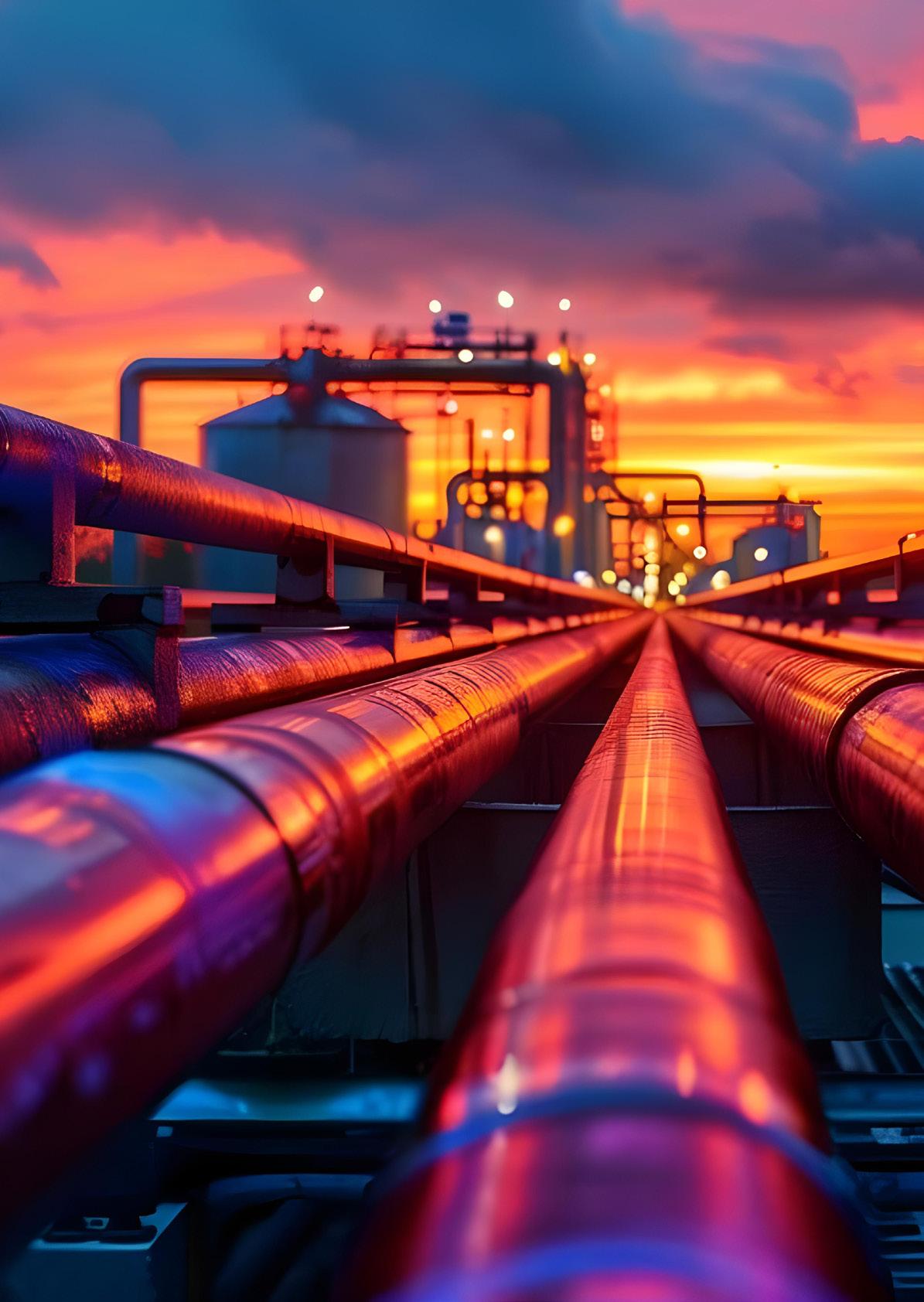

KBR
Q. What principles should people consider when deciding how much hydrogen supply to use?
A: A few principles that companies should have in mind when thinking about whether hydrogen makes sense for them and whether it should be part of their decarbonisation strategy, always take a systemic approach.
Don’t look at hydrogen in isolation as there is a hierarchy of solutions that companies should look at. Obviously, this varies from company to company, context to context, country to country.
The hierarchy of solutions should be energy efficiency first, try to reduce energy demand as much as possible. Then pursue electrification wherever you can, green electricity sourced reliably.
Finally, you should look at where hydrogen can complement the ‘last mile’ solution for you. Sometimes this will be a lot, sometimes a small amount.
Also, don’t forget hydrogen in the end is green electricity in disguise, so if you can directly use green electricity you should follow that route.
Secondly, you should use hydrogen as a precious resource; use it where it makes sense. The applications where hydrogen is unavoidable are where you’re using hydrogen already as a feedstock etc.
Of course, there is green heat for industrial processes; now we see a lot of companies looking into this. We advise starting with the low-hanging fruit with energy efficiency, but now people are really starting to see hydrogen as an option.

Q2. How important is it to de-risk investment and how do we build supply and demand simultaneously?
A: The overall picture is that there is a need for policy and regulatory support for the development of the green hydrogen market. There is a consensus on this topic. We are actually trying to create demand and supply of hydrogen at the same time.
If you don’t have both, then any investments in hydrogen will be considered risky by companies.
So far, we have seen a number of initiatives that are related to the supply side. Take the case of the IRA in the US in the form of a tax credit. We’ve also seen the first H2 bank auction in Europe that has attracted a lot of projects that could compete for subsidies.
Then we will see a number of interesting projects stem from this and will benefit from a subsidy and make hydrogen available at a lower price.
Looking just at the supply side is not enough, because if there is no certainty about demand, it is really difficult to have bankable projects.
It is important to look at the demand side of this issue and demand-side incentives. Because you have the off-takers typically looking at the expected reduction of hydrogen cost in the coming years and then they might say ‘Why should we procure hydrogen now, maybe we should wait.’
The German government are focusing on this by announcing they will build gas-fire power plants that are hydrogen-ready. You might have some quotas to push demand, for green steel or fertiliser. All this starts to prove that the demand will be there.
You also have CfD mechanisms in Japan and the UK. Demand pools are just as important as the supply pools.
I would go one step further than this though; to create this market you need to have supply and demand meet at the same time. One development that has been quite interesting to me is this double auction model where you have a platform that is doing the action on the demand side and the supply side.
You also have CfD mechanisms in Japan and the UK. Demand pools are just as important as the supply pools.
So, the H2 global initiative by the German Federal Ministry of Economic Affairs; intends to have an auction on the supply side where bidders can compete on the lowest price they can sell the green hydrogen over a ten-year period.
Then on the demand side, you have an auction for off-takers to be what is the highest they are willing to pay. then the difference between the highest willingness to pay and the lowest cost of production is where the government come in and closes that gap.
LISTEN TO THE FULL PODCAST ON SPOTIFY


The Hydrogen Industry Leaders Roundtables are set to ignite dynamic conversations, foster collaboration, and pave the way for a sustainable hydrogen-powered future. Our distinguished roundtables will cover legislation, law, and private finance, each bringing their unique perspectives to the table. These roundtables can be tailored to your specific business objectives and needs.













